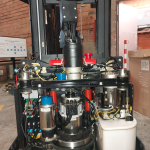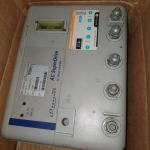The interface of crypto and sustainable practices: how crypto, stable coins and supply chains can work together

In the world of finances, cryptocurrency has gained in recent years. With its decentralized nature, transparency and low entry barriers, it is no wonder that many investors turn to crypto for their financial assets. However, since the market continues to grow, concern is also concerned about its environmental impact. An area in which crypto makes considerable progress is located in supply chain management with the introduction of stable coins and decentralized financing solutions (Defi) that prioritize sustainability.
Stable coins: a key component of sustainable crypto
Stable coins are cryptocurrencies that are on a conventional currency or a traditional asset such as the US dollar or US gold. This makes them almost worthless compared to their precious metal colleagues, which is a great advantage for scalability and liquidity. Stablecoins also offer investors a stable value anchor and reduce volatility, which is associated with conventional assets such as stocks and bonds.
One of the most promising examples of stablecoin technology is the Tether (USDT) and USDC stable coins that have become popular under cryptocurrency investors due to their broad introduction and low fees. These stable coins are classified in the US dollar and offer investors who want to diversify their portfolios, a stable value anchor.
Supply Chain Management in Crypto: A new border
Since the crypto is becoming increasingly popular, concern is also concerned about its environmental impact. An area in which crypto can make considerable progress is located in supply chain management with the introduction of decentralized financing solutions (DEFI) that prioritize sustainability.
A major challenge for traditional cryptocurrencies is their high energy consumption, which often uses complex computer processes and validation of transactions. In order to alleviate this problem, Defi solutions are developed that use blockchain technology to create transparent and safe supply chains for various assets, from food to luxury goods.
Mnemonic: a key component of sustainable crypto **
Another area in which crypto can make considerable progress is the development of mnemonic tools such as mnemonics. With these digital wallets, users can safely store and manage their private keys and offer an additional protective layer against data injuries and cyber attacks.
One of the most important advantages of mnemonic tools is that you offer a safe way to save confidential information such as passwords and encryption key. This can be particularly important for people who use cryptocurrency for financial transactions or other sensitive activities.
The intersection: crypto, stable coins, supply chain and mnemonics
In summary, it can be said that the interface of crypto, stable coins, supply chain management and Mnemonic Technology is an important opportunity for sustainable practices in the financial industry. Since consumers are increasingly aware of the environmental impact of their purchases, companies react with innovative solutions that prioritize sustainability.
The growing popularity of crypto has created new possibilities for decentralization Finance (Defi) applications that use blockchain technology to create transparent and safe supply chains. Stablecoins such as USDT and USDC also have the traditional volatility of the assets with investors who want to diversify their portfolios without the traditional volatility.
The development of mnemonic tools such as Mnemonic offers a secure way to store confidential information and protect users from data injuries and cyber attacks. By using these technologies, companies can create more sustainable offer chains that reduce the effects on the environment and at the same time improve the overall efficiency and security.








